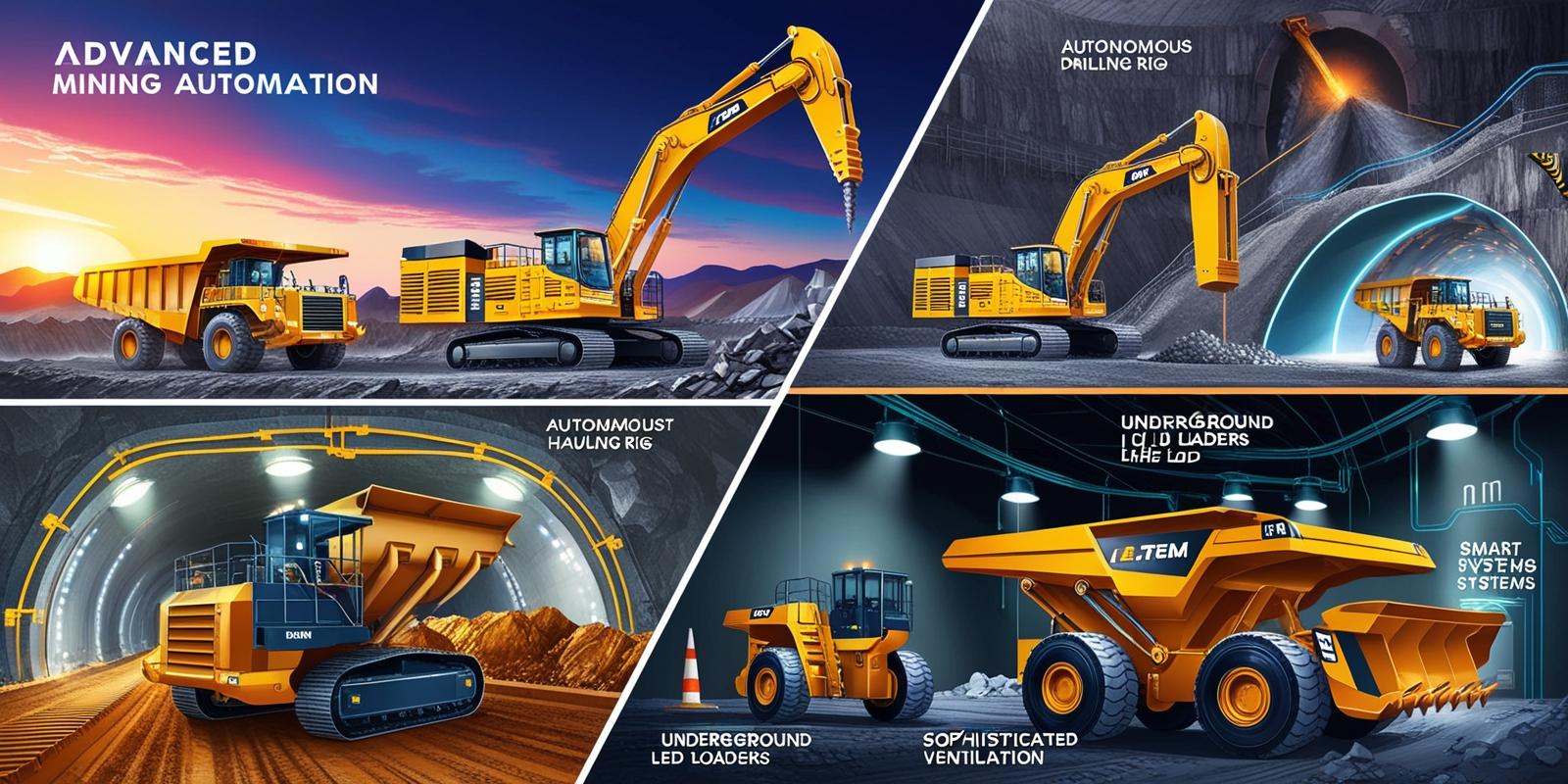In the dust and roar of traditional mining operations, a quiet but powerful revolution is underway. No longer defined solely by heavy machinery, loud drilling, and manual labor, the mining automation industry is stepping into a new era—one powered by automation.
From the heart of underground tunnels to the wide stretches of open-pit mines, automation is transforming how we extract and manage the Earth’s resources. But this isn’t just about replacing workers with robots—it’s about making mining smarter, safer, and more sustainable for everyone involved.
The Shift: From Manual to Machine-Driven Mining
For decades, mining has been known as one of the most physically demanding and hazardous industries in the world. Workers often face extreme temperatures, unstable terrain, and exposure to dust and toxic gases. On top of that, mining operations are complex and expensive to manage, especially in remote locations.
That’s where automation comes in.
By integrating advanced technologies like remote monitoring systems, autonomous trucks, robotic drilling, and AI-powered software, mining companies are redefining how they operate. These innovations allow critical tasks—like drilling, blasting, hauling, and equipment diagnostics—to be done more efficiently, with minimal human risk.
What Mining Automation Really Means
Mining automation isn’t a one-size-fits-all solution. It includes a wide spectrum of technologies and systems that work together to make mining processes more intelligent and less dependent on direct human intervention.
For example, remote monitoring software gives engineers and operators the ability to track machinery health, site conditions, and production performance in real-time—from thousands of miles away. Meanwhile, asset management systems help predict maintenance needs before equipment fails, preventing costly downtime.
Download PDF Brochure @ https://www.marketsandmarkets.com/pdfdownloadNew.asp?id=257609431

In open-pit mining, driverless trucks are already moving massive loads of material without a person behind the wheel. Underground, robotic drilling rigs can navigate tight, dangerous spaces and extract resources with high precision, reducing waste and improving productivity.
Why It Matters: Safety, Efficiency, and Sustainability
At its core, the goal of mining automation is simple: to do more with less risk.
Safety is perhaps the most immediate and important benefit. With fewer people on-site in dangerous areas, the likelihood of accidents drops significantly. Remote-controlled and autonomous equipment can take on the riskiest tasks, keeping human workers out of harm’s way.
Then there’s efficiency. Automated systems run around the clock without fatigue, human error, or shift changes. They collect data constantly, helping operators fine-tune processes and make better decisions based on real-time insights. This level of control and predictability was nearly impossible in the old manual model.
And let’s not forget about sustainability. By using resources more efficiently and reducing waste, automation helps minimize the environmental impact of mining. Lower fuel consumption, fewer emissions, and optimized land use all play into making mining a cleaner, more responsible industry.
A Human-Centered Revolution
Despite popular misconceptions, automation in mining isn’t about taking jobs away. It’s about changing the nature of work.
Rather than eliminating workers, automation is reshaping roles, creating new opportunities in technology, engineering, data analysis, and remote operations. A technician who once worked on-site repairing machines may now monitor systems from a digital control room. A geologist might now use AI models to plan extraction strategies more effectively.
Mining companies are also investing in upskilling their workforce, preparing employees for the future and ensuring they’re part of this transition—not left behind by it.
Looking Ahead: The Future of Mining Is Already Here
We’re only at the beginning of the mining automation journey. As technology continues to evolve, we’ll see even more integration of AI, machine learning, and robotics. Mines will become more autonomous, interconnected, and efficient—and far less dangerous for workers.
Some of the world’s biggest mining companies, like Rio Tinto, BHP, and Vale, have already made massive strides in automation. Their success is proof that embracing innovation isn’t just good for the bottom line—it’s also good for people and the planet.
Conclusion: A Smarter Way to Dig Deep
Mining has always been about digging deep—into the Earth, into data, into new frontiers. With automation, the industry is now digging deep into innovation itself.
By leveraging smart technologies, mining is becoming safer, faster, more precise, and more sustainable. And in doing so, it’s proving that even the oldest industries can find new life in a digital age—one intelligent machine, and one empowered worker, at a time.
Frequently Asked Questions (FAQ)
What is mining automation, exactly?
Mining automation refers to the use of technology—like sensors, software, and autonomous machines—to carry out tasks that traditionally required manual labor. It includes everything from driverless haul trucks and robotic drilling rigs to smart software that monitors equipment and site conditions remotely. The goal is to make mining safer, more efficient, and more precise.
How is automation making mining safer?
Safety is one of the biggest benefits of mining automation. By using remote-controlled and autonomous equipment, fewer workers are exposed to hazardous environments such as underground tunnels or unstable open-pit mine sites. Tasks that were once risky—like drilling or equipment inspections—can now be done without putting human lives at stake.
Will automation take jobs away from miners?
Not necessarily. While some traditional roles may change or be reduced, automation is also creating new kinds of jobs—in technology, data analysis, system monitoring, maintenance, and remote operations. Many mining companies are investing in retraining their workforce to work alongside automated systems and manage high-tech tools.
What types of technologies are involved in mining automation?
There’s a wide range of technologies in play. These include remote monitoring systems that track equipment in real time, asset management software that predicts when machines need maintenance, autonomous vehicles that can haul ore without a driver, and even artificial intelligence that analyzes geological data or optimizes routes for machinery.
